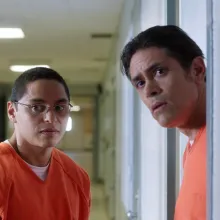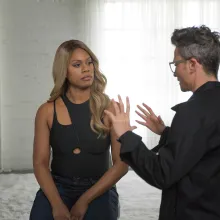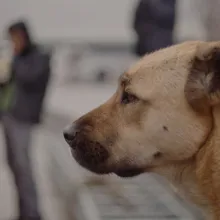On the night of November 14, 2018, I was at LAX when my phone rang. Programmer Dilcia Barrera was calling to say that The Infiltrators would premiere at the 2019 Sundance Film Festival. It was a deep thrill. Cristina Ibarra and I had been working on our documentary for almost eight years and the call guaranteed, at a basic level, that The Infiltrators would be seen. Like all filmmakers, our goal was always to make a story visible. With this particular film, we believed that visibility might even make the difference between freedom and deportation, perhaps between life and death—but we never
Latest Posts
Dear Documentary Community: In 2019, many of you joined our call to federal immigration leaders to release Claudio Rojas, the protagonist of the Sundance Award-winning documentary The Infiltrators , from immigration detention in Florida. Claudio had been detained by ICE after the release of the film in early 2019, in which he spoke critically of US immigration policy. His detention and subsequent deportation were clear retribution for his constitutionally-protected use of political speech. Claudio’s lawyers continue to fight in court for his right of return to the United States, where he lived
Today’s documentary filmmakers are pitted against each other in fiercely competitive structures for funding, platforms, exposure and distribution. As a result, we tend to imagine our future in the context of a zero-sum fight for resources. Instead of merely asking for recognition from those structures, it is time to begin constructing something altogether new. Just like radical farmers once did. Modern-day community land trusts originated in an experiment during the civil rights era to build power and wealth among poor Black farmers. The idea was to collectivize land and resources for shared
As we sit in the “golden age of documentary,” the actual gold for many filmmakers, and especially for BIPOC, LGBTQ and disabled filmmakers, is specious. We glean this through a lot of anecdotes and what little data we have. The documentary field needs more researchers and policy makers to gather, demand, and make transparent hard data to reshape inequities in our field. If we cannot firmly identify what is fundamentally broken, our rebuild will be structurally unsound. In a 2018 “State of the Documentary Field” survey, the Center for Media & Social Impact found that 56 percent of respondents
I am here to provide a China perspective and a feminist point of view, raising some questions about the face of working women, and rather than addressing what we are concerned about as filmmakers, distributors and human beings in a COVID 19 pandemic and politically chaotic era.
IDA also announced that filmmaker Manuel Acuña would be the first recipient of the IDA Netflix Global Emerging Filmmaker Award - a grant of $25,000.
What I’m going to talk about today are three of those unseen practices in documentary filmmaking—compensating protagonists, empowering our crews, and questioning who is in leadership.
When we are fighting a pandemic and on the brink of environmental cataclysm and we can’t breathe and our children are locked in cages, what is our responsibility as artists?
The Mole Agent is in a class by itself. For starters, documentaries about private detectives and their moles are exceedingly rare. What’s more, any film that mashes up vérité, film noir and Pink Panther tone is one of a kind.
Stray, Elizabeth Lo’s feature debut, takes you inside the world of three street dogs in Istanbul. Zeytin, Nasar and little Kartal lead viewers into parts of Turkish society that cut across social strata, from fashionable shopping streets to construction sites to abandoned buildings where refugee squatters bunk down for the night. Without anthropomorphizing her three leads, Lo shows their lives to be rich with encounters, both human and canine. With quotes from Diogenes, the Greek philosopher who based his code of conduct on his dog Antisthenes, Stray examines the age-old relationship between









